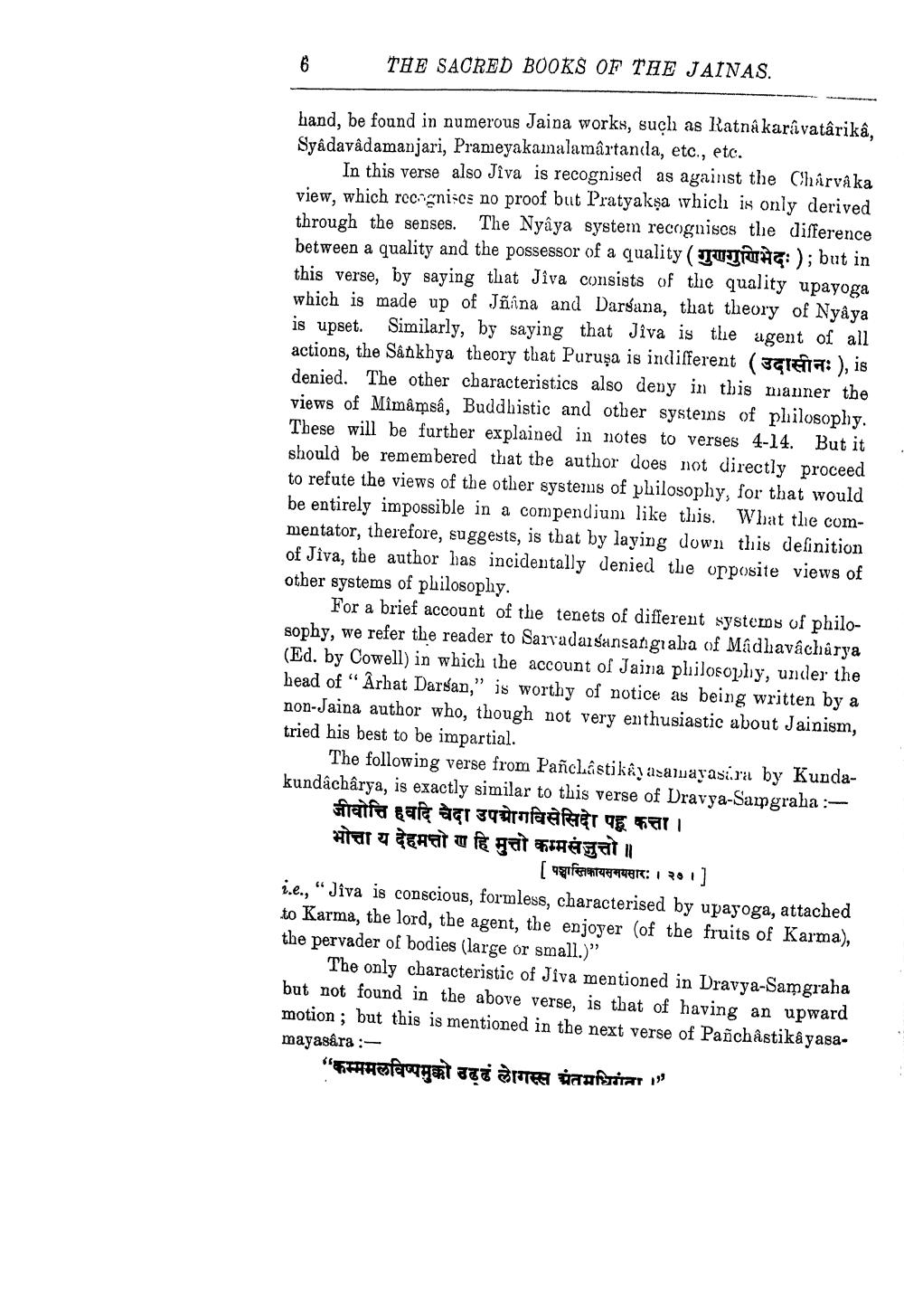________________
THE SACRED BOOKS OF THE JAINAS.
hand, be found in numerous Jaina works, such as Ratná karávatârikâ. Syâdavâdamanjari, Prameyakamalamartanda, etc., etc.
In this verse also Jiva is recognised as against the Chárvá ka view, which reconiscs no proof but Pratyaksa which is only derived through the senses. The Nyâya system recognises the difference between a quality and the possessor of a quality ( TUTUH: ); but in this verse, by saying that Jiva consists of the quality upayoga which is made up of Jñana and Darsana, that theory of Nyâya is upset. Similarly, by saying that Jiva is the agent of all actions, the Sankhya theory that Puruşa is indifferent (SCIE : ), is denied. The other characteristics also deny in this manner the views of Mîmâmsá, Buddhistic and other systeins of philosophy. These will be further explained in notes to verses 4-14. But it should be remembered that the author does not directly proceed to refute the views of the other systems of philosophy, for that would be entirely impossible in a compendium like this. What the commentator, therefore, suggests, is that by laying down this definition of Jiva, the author has incidentally denied the opposite views of other systems of philosophy.
For a brief account of the tenets of different systems of philosophy, we refer the reader to Sarvadarsansangalia of Madhavacharya (Ed. by Cowell) in which the account of Jaina philosophy, under the head of "Århat Darsan," is worthy of notice as being written by a non-Jaina author who, though not very enthusiastic about Jainism, tried his best to be impartial.
The following verse from Pañchâstikêyazalayasira by Kundakundacharya, is exactly similar to this verse of Dravya-Samgraha :
जीवोत्ति हवदि चेदा उपयोगविसेसिदो पहू कत्ता । भोत्ता य देहमत्तो ण हि मुत्तो कम्मसंजुत्तो॥
(9stre14844448T: I 301] i.e., “Jiva is conscious, formless, characterised by upayoga, attached to Karma, the lord, the agent, the enjoyer (of the fruits of Karma), the pervader of bodies (large or small.)”.
The only characteristic of Jiva mentioned in Dravya-Samgraha but not found in the above verse, is that of having an upward motion; but this is mentioned in the next verse of Pañchâstikayasa. mayasâra :
"कम्ममलविष्पमुक्को उढढं लोगस्स अंतमधिगंता ।"




